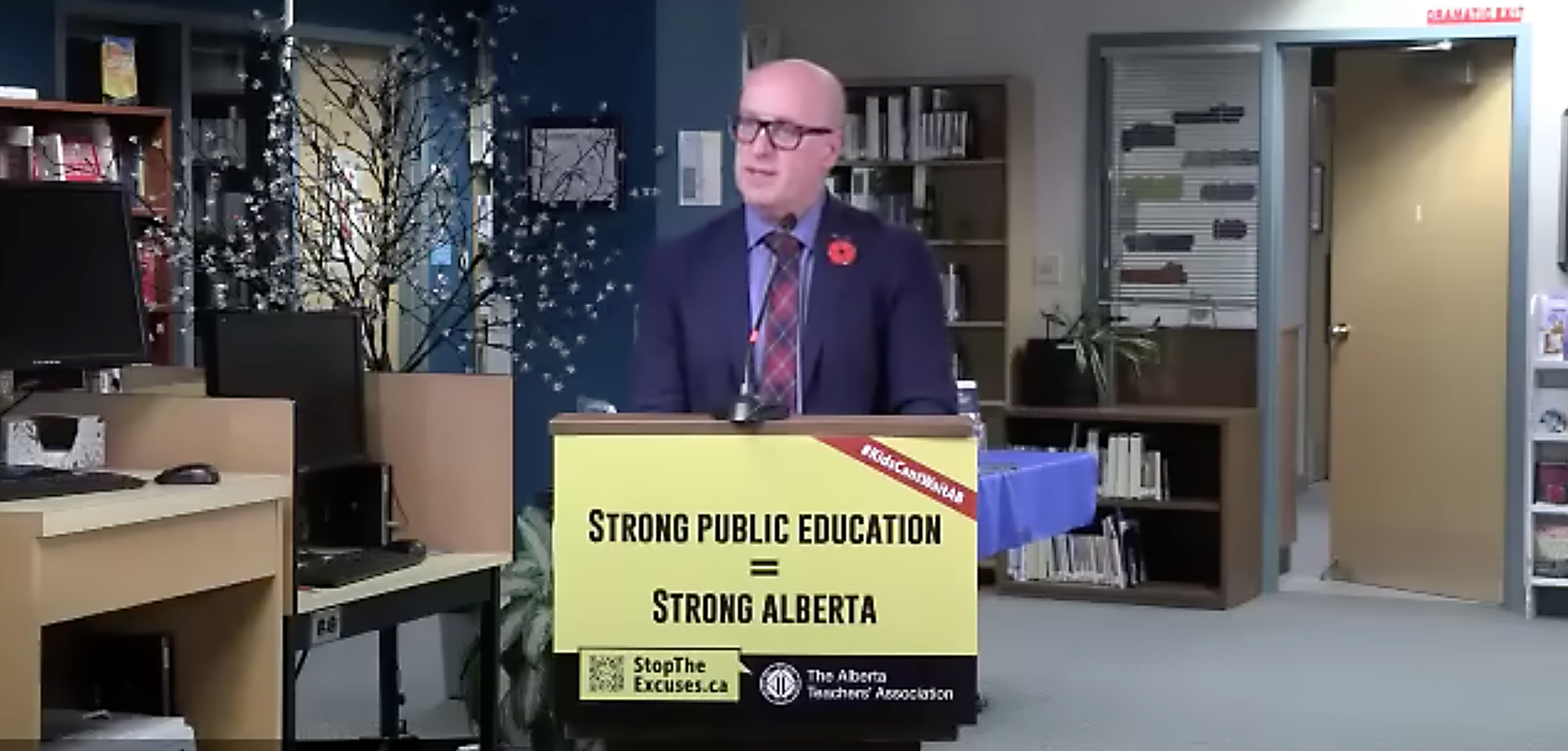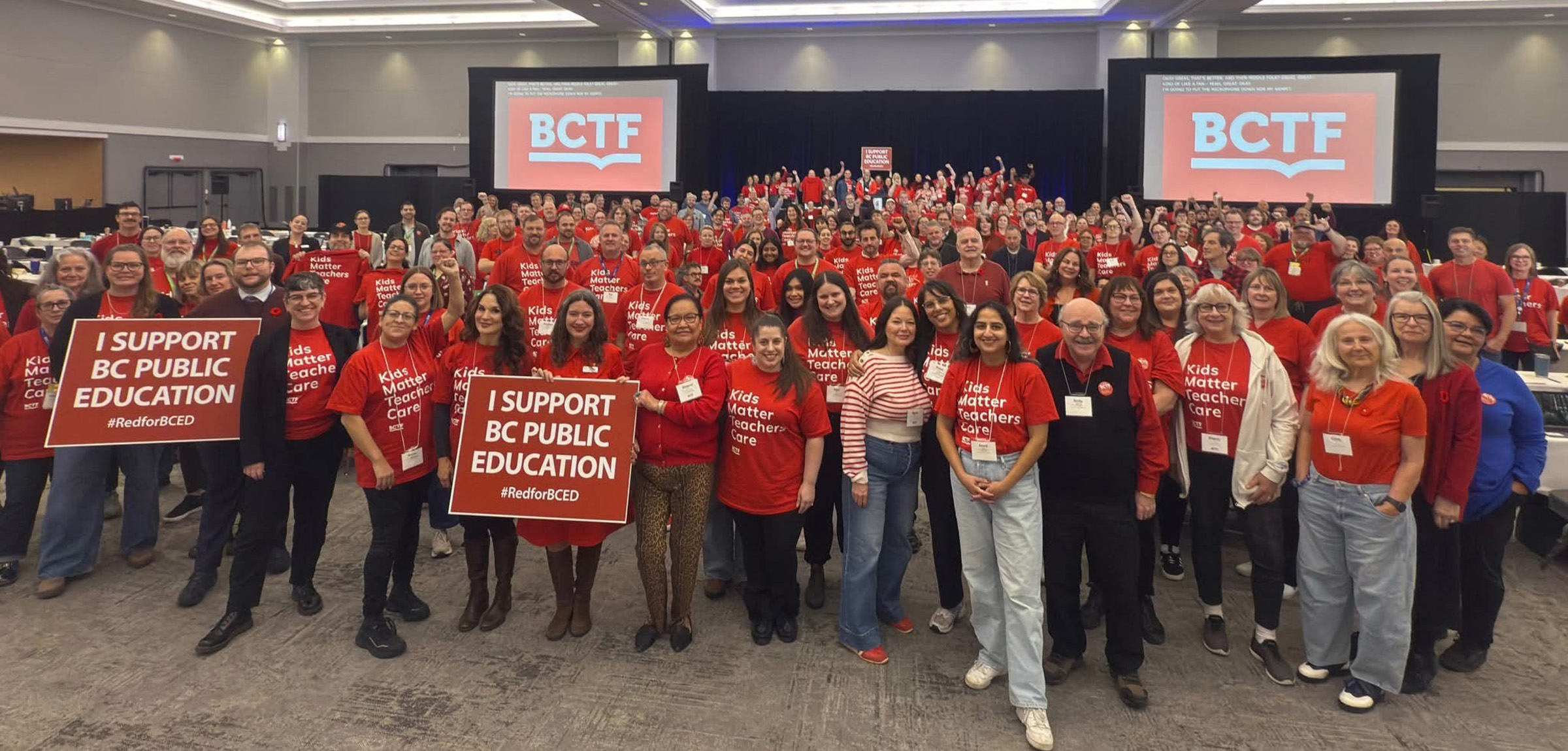The Alberta Teachers’ Association (ATA) has launched a legal challenge against the provincial government’s use of the notwithstanding clause to end the provincewide teachers’ strike after calling the move “a reckless and historic abuse of power.”
On November 6, the ATA filed an application with the Court of King’s Bench seeking to overturn sections of Bill 2, the Back to School Act, which ordered Alberta’s striking teachers and school leaders back to work and imposed a collective agreement on ATA members. The ATA also requested an injunction to immediately halt enforcement of the legislation while the legal challenge proceeds.
“This government’s overreaching decision to invoke the notwithstanding clause goes beyond forcing teachers to end a lawful strike,” said ATA president Jason Schilling. “It imposes a settlement, restricts free collective bargaining, and sets a precedent that threatens the fundamental freedoms and legal protections of all Albertans.”
While the notwithstanding clause shields legislation from most legal challenges under the Canadian Charter of Rights and Freedoms, the ATA’s legal counsel believes there are avenues to argue that the government’s actions constitute overreach and violate broader principles of administrative and labour law.
What Bill 2 means
The controversial legislation, introduced on October 27 and passed through the provincial legislature in less than 12 hours, retroactively applies a central collective agreement from September 1, 2024 to August 31, 2028. This agreement was rejected earlier this fall by 89.5 per cent of teachers.
Bill 2 not only prohibits teachers from striking for the duration of the agreement, but also suspends local bargaining while the agreement is in effect. In addition, the bill outlines significant penalties for noncompliance, including fines of up to $500 per teacher per day and $500,000 per day for the ATA.
While the ATA and its members complied with the back-to-work order, Schilling emphasized that the imposed resolution failed to address the underlying issues that triggered the strike in the first place, including overcrowded classrooms, chronic underfunding and insufficient support for students with complex needs.
“We will challenge this legislation in the courts, in our communities and in the very conscience of Albertans,” he said. “While Alberta may have ended the strike, they have not ended the crisis in Alberta’s classrooms.”
Critics denounce the bill
Opposition leaders condemned the government’s actions as authoritarian and undemocratic. NDP Leader Naheed Nenshi accused Premier Smith and her cabinet of using the notwithstanding clause to bypass democratic processes and override workers’ rights.
“They trampled over the rights of teachers and their unions,” Nenshi said, adding that “the strike was entirely of the UCP’s own making.”
Civil society groups, professional organizations, unions, and even churches and religious groups from across Canada also spoke out against the use of the notwithstanding clause. Many viewed the matter as serious and important for the future of collective bargaining—not just for teachers, but for all unionized employees and Albertans who are at risk of similar breaches of their rights.
“The pre-emptive use of the notwithstanding clause cannot be allowed to normalize. Neither should the curtailment of legislative debate become routine,” said a statement from Christopher N. Samuel, president of the Canadian Bar Association, Alberta Branch. “Overuse of these extraordinary measures—especially when coupled with provisions that also set aside the Alberta Bill of Rights and the Alberta Human Rights Act—risks undermining the constitutional and human-rights architecture that protects all Albertans. We cannot take the rule of law for granted; if we do, it may not be there to protect our rights when we most need it.”
Premier, education minister on defense
Premier Danielle Smith defended the legislation as necessary to restore stability to Alberta’s schools and classrooms, stating that prolonged labour disruptions were causing irreparable harm to students’ education. In an open letter to teachers, Smith acknowledged that back-to-work legislation was not the desired outcome for teachers.
“Our government did not make the decision to introduce the Back to School Act lightly,” she said. “Our intent is to ensure that students return to the classroom while we work together to address the real and pressing issues in our schools.”
Minister of Education and Childcare Demetrios Nicolaides likewise spoke of the need to reopen schools to restore stability for students.
“Students should not pay the price for this strike action, which unfortunately they are. Obviously, that has to be the paramount consideration in everything that we do,” he said.
ATA calls for government “to do what is right”
Even as the ATA challenges Bill 2 in the courts, it is also calling upon the government to reconsider its use of the notwithstanding clause to order teachers back to work. In a letter to Smith and Nicolaides dated November 4, Schilling entreated them “to do what is right” and repeal Bill 2, particularly its use of the notwithstanding clause.
“There are solutions to the accumulated challenges facing Alberta’s public education system and the teachers who work every day within it,” the letter said. “What Albertans require from you is the political will to reach agreement on concrete solutions that teachers, students, parents and Albertans can have confidence in.”
The outcome of the ATA’s challenge will likely shape not only the future of teacher labour relations in Alberta but also the broader debate over government limits and the protection of constitutional rights across Canada.
As the challenge moves forward, it will likely clarify the limits of the notwithstanding clause and its impact on workers’ rights within Alberta and within Canada.



